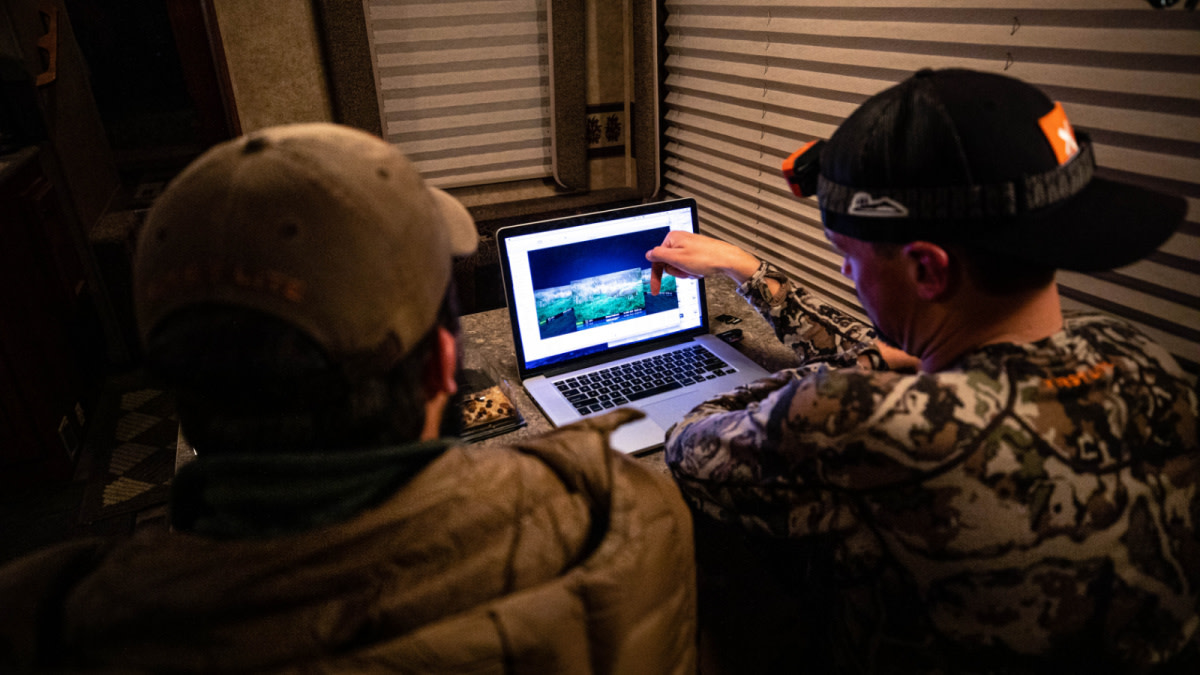
The danger with rut hunting advice is that it’s often diluted, over-simplified garbage. Well, maybe not garbage, but much of the how-to content built around killing a buck during the rut assumes an awful lot about the audience and the conditions that aren’t always true.
For example, the weather plays a huge role in rut-hunt planning. Pressure from your fellow deer junkies does, too. Then there is the great intangible of just what the actual deer seem to want to do from day to day. It’s not so simple killing a buck in mid-November, and it’s not unusual for something to happen that shows us we should make a U-turn and try a different direction strategy-wise.
Good Does, Bad Does
Founder of The Element Podcast and YouTube channel, Tyler Jones, loves building a rut strategy around doe bedding areas. This tried-and-true style is popular because it works, but it’s not the only way to fill a tag after Halloween.
“I love doe bedding areas because they are consistent, and that gives me a lot of confidence,” Jones said. “But if I’m not hunting doe bedding, I like to see something happen within two sits or I’m gone.”
This style allows Jones to quickly assess his local situation and decide if he needs to move, or stay the course. This also means that the Texas whitetail hunter likes to sit where he can see, to put his powers of observation to work.
“Being able to see can be a huge advantage,” Jones said. “This is helpful in all situations, and can clue you into a hot doe in your area that should change your plans in an instant.”
There is an important distinction in what Jones said. Getting downwind of a known doe bedding area is usually never a bad rut plan, but one hot doe can change everything. If you happen to be able to see evidence of the estrus doe that is soaking up the neighborhood deer, you can adapt in the moment to her presence and the fleeting window in which she’ll be a buck magnet.
Conversely, if your known doe bedding area doesn’t show you that the does are there, or the bucks don’t believe the does are there, then it’s time to move on.
Purposeful Travel
Nature doesn’t do random well. We think it does because it’s easier to dismiss certain behaviors we might not understand, but wasting calories and putting themselves at unnecessary risk isn’t in the best interest of prey animals like whitetails.
If you acknowledge this, you also acknowledge the reality that most bucks aren’t just blindly lighting out across the landscape to find does. They have efficient routes that they run over and over again. This makes some funnels and pinch points unbelievable and some of them mostly duds.
If you fall in love with a spot because it looks textbook with its tight topo lines and limited travel options due to terrain, be careful. If the bucks don’t seem to use it much, it’s not worth your time. This is a tough pill to swallow for a lot of hunters because they believe the rut will eventually send a good one down the trail. In some terrain traps, yes, that’s almost a given. In many, it’s not. Choose wisely, and don’t be afraid to give up on funnels and pinch points that just aren’t producers.
Weather Woes
Weather doesn’t keep the deer from trying to make little deer, but it sure changes where they do it. That ridgetop funnel that looks ideal when the temperatures never touch freezing all day might be a deer ghost town if the mercury hits 60 or 70 degrees during the midday. The northwest wind and cold fronts you counted on to persuade bucks to criss-cross your favorite woodlot might get replaced by a straight south wind that changes the whole game.
I find myself making more and more of my decisions on where to sit during the rut based on weather conditions. I know that the deer are going to do their thing, but it’s often deep in the shady, low, cooler cover than up on the ridges or in more open terrain. It might mean your favorite funnel is a no-go, but posting up on the only water source on the farm is a no-brainer.
Pay attention to what the deer do in all conditions, and make your decisions based on the daily weather changes as well as your daily observations. The more you pay attention to the weather and current deer movement, the quicker you’ll be able to abandon a bad plan for something more likely to result in a notched tag.
Feature image via Captured Creative.




